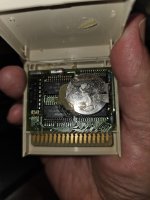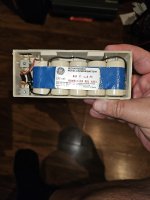falter
Veteran Member
I got one of these things this weekend and did a cursory look. Unfortunately FedEx Hulk-smashed it. Not sure how with the keys covered by the lid and the unit packed in paper, but somehow they managed to slice off about 8 or 9 of the keys, breaking off their keystems. Guess they were mad about that last insurance claim. Anyway, that's fixable. But, I wanted to see if I could get it running. Specs are it's a Z80 compatible machine with some flavor of CP/M built in ROM, and then it has a bunch of carts it uses for storage and programs. 8 line LCD. The charger is a 7.2vdc wall wart, but curiously it's been split into 4 pins, per photos. The 4 pin connector plugs into the battery pack, which in turn plugs into the laptop. The connector between the battery and the computer internally is the same 4 pin arrangement as between the charger and battery. The laptop will not power up without good battery, and with the wall wart plugged in nothing happens either. Reading the manual it seems to expect to have some sort of charge before it will automatically beep and turn on. There's no power button.
I've done continuity tests and the pins seem to be 'straight through', ie "pin 1" on the charger header is pin 1 on the battery backside, pin 1 on the front side of the battery plugging into the laptop itself, and pin 1 on the laptop's receiver. I'm tempted to just plug the charger straight into the receiver inside the laptop to bypass the battery.
I was trying to figure out what pin delivered what, so far I can only see 3.2V on one pin. I'm wondering if they split the 7.2 in half. The battery pack, which is tiny by 80s standards, has NiCad batteries, and is sealed. There is no info either on the pack itself or in the manual about how many volts it puts out. I'm wondering if anyone here has experience with this sort of arrangement - would it be likely the battery pack sends out *more* voltage than the adapter? I'm wondering, if the pins all seem to be the same, if it'd be smart to just bypass the battery with the charger. I note they all have that weird looks-like-a-mouse marking where the pins are.
Thoughts?
I've done continuity tests and the pins seem to be 'straight through', ie "pin 1" on the charger header is pin 1 on the battery backside, pin 1 on the front side of the battery plugging into the laptop itself, and pin 1 on the laptop's receiver. I'm tempted to just plug the charger straight into the receiver inside the laptop to bypass the battery.
I was trying to figure out what pin delivered what, so far I can only see 3.2V on one pin. I'm wondering if they split the 7.2 in half. The battery pack, which is tiny by 80s standards, has NiCad batteries, and is sealed. There is no info either on the pack itself or in the manual about how many volts it puts out. I'm wondering if anyone here has experience with this sort of arrangement - would it be likely the battery pack sends out *more* voltage than the adapter? I'm wondering, if the pins all seem to be the same, if it'd be smart to just bypass the battery with the charger. I note they all have that weird looks-like-a-mouse marking where the pins are.
Thoughts?
Attachments
-
 20220729_212752.jpg675.5 KB · Views: 20
20220729_212752.jpg675.5 KB · Views: 20 -
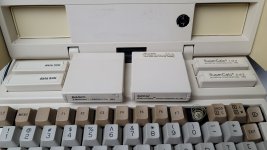 20220729_223013.jpg621.7 KB · Views: 19
20220729_223013.jpg621.7 KB · Views: 19 -
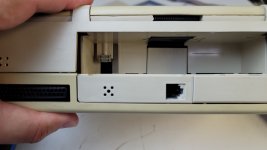 20220802_195852.jpg437.8 KB · Views: 16
20220802_195852.jpg437.8 KB · Views: 16 -
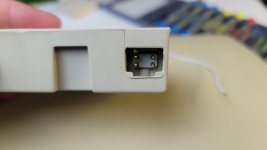 20220802_195857.jpg387.6 KB · Views: 15
20220802_195857.jpg387.6 KB · Views: 15 -
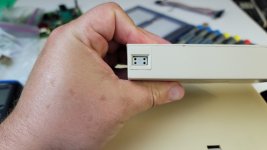 20220802_195903.jpg520.2 KB · Views: 16
20220802_195903.jpg520.2 KB · Views: 16 -
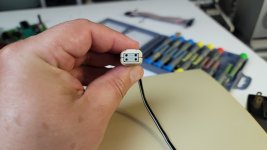 20220802_195914.jpg455.6 KB · Views: 17
20220802_195914.jpg455.6 KB · Views: 17 -
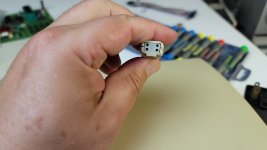 20220802_195918.jpg1.9 MB · Views: 16
20220802_195918.jpg1.9 MB · Views: 16 -
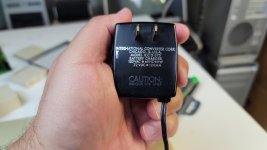 20220802_195923.jpg540.3 KB · Views: 20
20220802_195923.jpg540.3 KB · Views: 20

